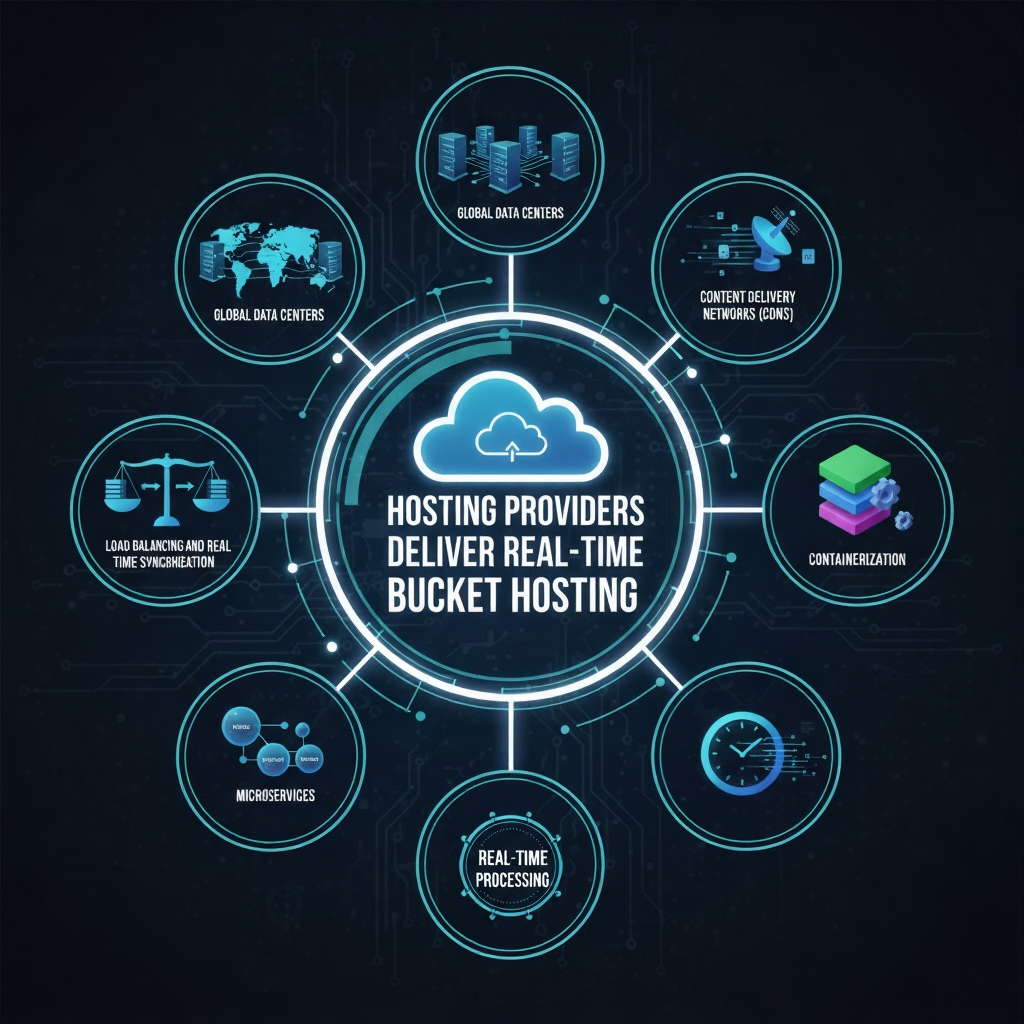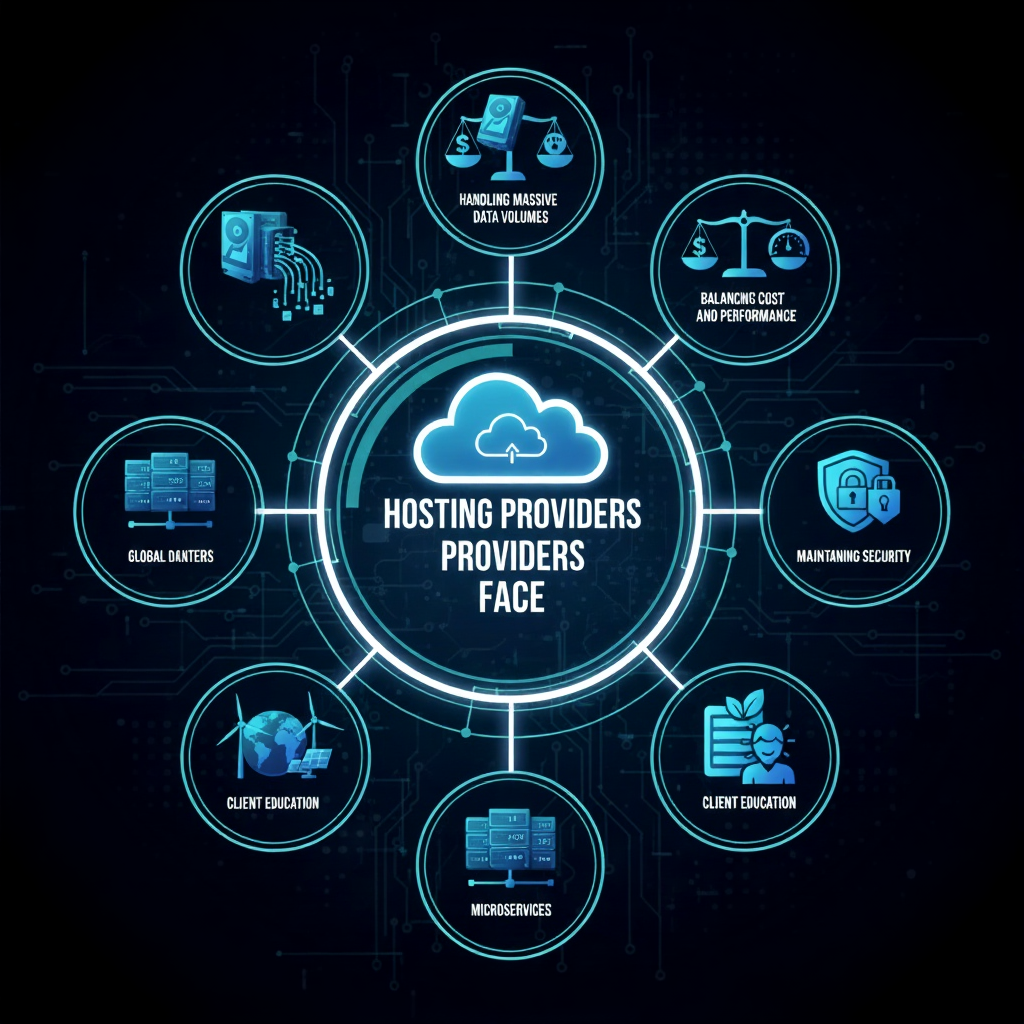Simple & Secure eCommerce Real-Time Bucket Hosting from a Leading Hosting Provider
This article is ideal for a website, technology blog, or hosting company content page — highlighting the importance of real-time bucket hosting for eCommerce, its security, scalability, and challenges hosting providers face.
Table of Contents
1. Introduction: The New Era of eCommerce Hosting
The eCommerce industry has evolved rapidly, powered by digital transformation, cloud computing, and a new generation of online shoppers. From small startups to global enterprises, every business now depends on fast, reliable, and secure hosting to ensure smooth operations and customer satisfaction.
In this dynamic landscape, “Simple & Secure eCommerce Real-Time Bucket Hosting” has emerged as a game-changing solution offered by leading hosting providers. It bridges the gap between scalability, security, and simplicity — empowering businesses to manage massive volumes of product data, transactions, and multimedia assets with real-time responsiveness.
For modern eCommerce websites, the right hosting solution is not just a technical choice — it’s a strategic business decision that impacts user experience, SEO rankings, and brand trust.
2. Understanding Real-Time Bucket Hosting
2.1. What Is Real-Time Bucket Hosting?
Real-time bucket hosting is a cloud-based hosting architecture designed to handle instant data access, live updates, and high-speed scalability. It organizes website data (like images, videos, product files, and user uploads) into “buckets” — independent, distributed storage containers.
Each bucket functions as a self-contained storage environment, allowing seamless integration with content delivery networks (CDNs), APIs, and eCommerce platforms. In essence, it delivers data to users in real time — without delay, lag, or downtime.
2.2. Why It Matters for eCommerce
In eCommerce, speed and uptime are everything. When customers browse an online store, each product image, review, and transaction request depends on real-time data retrieval. Even a one-second delay can result in lower conversions and lost sales.
Real-time bucket hosting ensures:
- Lightning-fast product loading.
- Instant inventory updates.
- Smooth cart and checkout operations.
- Reliable synchronization across devices and regions.
For example, if one user buys the last available item, the inventory count updates instantly for all others — preventing overselling or confusion.
3. The “Simple & Secure” Approach to Hosting
Leading hosting providers focus on two critical pillars of eCommerce success — simplicity and security.
3.1. Simplicity in Setup and Management
Traditional hosting often requires complex configurations and manual scaling. In contrast, real-time bucket hosting simplifies everything:
- Easy Onboarding: One-click setup for online stores and CMS platforms like WooCommerce, Magento, or Shopify.
- Automated Scaling: Servers automatically adjust to traffic surges during peak sales (e.g., holiday seasons or product launches).
- Unified Dashboards: Centralized management for storage, bandwidth, and performance metrics.
- Integration Flexibility: Works seamlessly with APIs, payment gateways, and analytics tools.
This simplicity allows even small businesses with limited technical expertise to run enterprise-level online stores efficiently.
3.2. Security You Can Trust
Security remains the cornerstone of eCommerce hosting. Every transaction involves sensitive data — customer information, credit card numbers, and login credentials.
Leading hosting providers use multi-layered security measures:
- End-to-End Encryption (SSL/TLS): Protects data during transmission.
- PCI-DSS Compliance: Ensures secure payment processing.
- DDoS Protection: Prevents distributed denial-of-service attacks that can crash a website.
- Firewalls and Intrusion Detection: Continuously monitor and block suspicious activity.
- Automated Backups: Guarantee data recovery even after system failures.
The combination of simplicity and security gives businesses confidence that their websites are safe, scalable, and stable — all without requiring deep technical management.
4. How Leading Hosting Providers Deliver Real-Time Bucket Hosting
Leading hosting providers combine cutting-edge infrastructure, smart automation, and global distribution to deliver high-performance real-time hosting.
4.1. Global Data Centers
Providers host websites across multiple geographic locations to reduce latency. Content is served from the nearest server to each user — ensuring speed and reliability.
4.2. Content Delivery Networks (CDNs)
CDNs distribute data from bucket storage to regional servers. This eliminates bottlenecks and delivers content quickly, even during high-traffic spikes.
4.3. Load Balancing
Traffic is evenly distributed across multiple servers to prevent overload, ensuring consistent performance and uptime.
4.4. Real-Time Synchronization
Inventory, customer data, and order status are updated instantly across all systems — essential for businesses managing multiple sales channels.
4.5. Containerization and Microservices
Modern hosting architectures use containers and microservices, allowing independent scaling of components like checkout, user accounts, and product catalogs without affecting the entire website.

5. Benefits of Simple & Secure eCommerce Real-Time Bucket Hosting
5.1. Unmatched Speed and Performance
Faster loading times directly increase sales and reduce bounce rates. Real-time hosting ensures near-instant page rendering and dynamic content delivery.
5.2. Seamless Scalability
Whether it’s 100 visitors or 100,000, the system automatically scales resources to match demand — with no downtime or manual upgrades.
5.3. Strong Data Protection
Built-in encryption, regular backups, and compliance certifications protect your business and customers from cyber risks.
5.4. Lower Maintenance Costs
Cloud automation reduces the need for manual intervention and costly hardware investments.
5.5. Enhanced Customer Experience
Real-time responsiveness, quick search results, and smooth transactions make for a frictionless shopping experience.
5.6. Business Continuity and Disaster Recovery
Even if one server fails, data instantly transfers to backup nodes — ensuring uninterrupted availability.
6. Challenges Hosting Providers Face
Despite their sophistication, even leading providers encounter challenges when managing real-time bucket hosting systems for eCommerce:
6.1. Handling Massive Data Volumes
eCommerce websites generate enormous data — product photos, order histories, and user analytics. Scaling storage while maintaining speed is a complex task.
6.2. Balancing Cost and Performance
Clients demand low-cost hosting without compromising performance. Providers must continuously optimize resources to stay competitive.
6.3. Maintaining Security
Cyber threats evolve daily. Providers must invest in advanced monitoring tools, zero-trust architectures, and 24/7 threat response teams.
6.4. Downtime Prevention
Even brief downtime can lead to significant financial losses for eCommerce clients. Maintaining 99.99% uptime requires redundancy and proactive monitoring.
6.5. Client Education
Many users lack technical knowledge about data management or scaling. Providers often need to educate customers on optimizing resources effectively.
6.6. Environmental Sustainability
Large-scale data centers consume high energy. Hosting companies are now under pressure to adopt green, energy-efficient solutions.

7. The Role of Automation and AI in eCommerce Hosting
Artificial Intelligence (AI) and automation are transforming how hosting providers manage infrastructure.
7.1. Predictive Scaling
AI algorithms anticipate traffic spikes based on historical data (like festive seasons) and automatically allocate extra resources.
7.2. Smart Security
Machine learning models detect suspicious activity in real time, blocking threats before they cause damage.
7.3. Performance Optimization
Automated load balancing and AI-driven caching improve website performance without human intervention.
7.4. Chatbots and Support Automation
AI-powered support systems handle customer inquiries instantly, improving user experience and operational efficiency.
Hosting Provider is Provide e-commerce hosting also
8. Integration of eCommerce Platforms with Real-Time Hosting
A leading hosting provider offers integration-ready solutions for major eCommerce platforms such as:
- Shopify: Instant synchronization with product databases and cloud storage.
- WooCommerce: Easy plugin-based integration with WordPress.
- Magento: High-performance hosting with elastic scalability.
- BigCommerce: Secure hosting with built-in CDN and caching layers.
These integrations simplify deployment and maintenance, making it easier for businesses to launch or scale online stores.
9. Case Study Example: Scaling an eCommerce Store with Real-Time Hosting
Let’s take a hypothetical case:
A mid-sized fashion brand runs flash sales every month. Their previous shared hosting struggled with slow checkout and crashed during peak traffic.
After migrating to a leading hosting provider’s real-time bucket hosting, they experienced:
- 70% faster load times.
- Zero downtime during sale days.
- Automated inventory synchronization.
- Improved SEO and user satisfaction.
This demonstrates how the right hosting infrastructure can turn technology into a competitive advantage.
10. Security and Compliance in Real-Time eCommerce Hosting
Security and compliance are non-negotiable for eCommerce. Hosting providers implement robust measures to meet international standards:
- SSL Certificates for data encryption.
- PCI-DSS Certification for secure payment handling.
- GDPR Compliance for data privacy (especially for European customers).
- Firewalls, Malware Scanners, and Intrusion Detection Systems to stop threats before they reach the application.
Providers also offer role-based access control (RBAC), ensuring that only authorized personnel can access sensitive business data.
Protecting a website and its data is a shared responsibility between the website owner and the hosting provider. Reputable hosting providers offer a suite of comprehensive security services that form the foundation of a secure online presence, shielding clients from the ever-evolving landscape of cyber threats. These services range from physical datacenter security to cutting-edge software protections and proactive monitoring.
🛡️ Foundational Network and Infrastructure Security
At the most basic level, a hosting provider is responsible for the security of its core infrastructure.
1. Physical Data Center Security
Security begins with the physical protection of the servers. Hosting providers invest heavily in securing their data centers with measures that include:
- 24/7 Monitoring and Surveillance: Continuous video surveillance and security personnel patrols.
- Biometric Access Controls: Limiting entry to authorized staff only.
- Uninterruptible Power Supplies (UPS) and Backups: Ensuring service continuity even during power outages.
- Environmental Controls: Sophisticated fire suppression systems and climate control to protect hardware.
2. Firewalls and Web Application Firewalls (WAF)
Firewalls are the first line of defense, acting as a barrier between the internet and the hosting network.
- Network Firewalls: These inspect incoming and outgoing network traffic, blocking unauthorized access attempts and known malicious data packets at the network level.
- Web Application Firewalls (WAF): A WAF provides a crucial second layer of defense specifically for web applications. It filters and monitors HTTP traffic between a web application and the internet, protecting against common attacks like SQL injection, cross-site scripting (XSS), and security misconfigurations. A WAF examines the logic of web requests, providing smarter protection than a basic network firewall.
3. Distributed Denial of Service (DDoS) Protection
DDoS attacks attempt to overwhelm a server or network with a flood of traffic, making the hosted website or application unavailable. Top-tier hosting providers offer multi-layered DDoS mitigation services that include:
- Traffic Scrubbing: Diverting all incoming traffic through specialized filtering centers to remove malicious packets before they reach the server.
- Rate Limiting: Controlling the number of requests a single IP address can make over a period to prevent server overload.
- Content Delivery Network (CDN) Integration: CDNs can absorb significant traffic spikes and distribute the load, often providing an effective defense layer against moderate-to-large DDoS attacks.
🔒 Data Protection and Encryption Services
The protection of sensitive data in transit and at rest is paramount, and hosting providers offer several key services to ensure this.
4. SSL/TLS Certificates and Encryption
The Secure Sockets Layer (SSL) and its modern successor, Transport Layer Security (TLS), are non-negotiable for modern web security.
- Data Encryption: SSL/TLS certificates encrypt all data transferred between a user’s browser and the web server, preventing hackers from intercepting sensitive information like login credentials or payment details.
- HTTPS Requirement: Having an active SSL certificate enables the site to use the secure HTTPS protocol, which is now a standard requirement for SEO and builds user trust, indicated by the padlock icon in the browser’s address bar. Many hosts now offer free, auto-renewing SSL certificates (like Let’s Encrypt) as a standard feature.
5. Automated Backups and Disaster Recovery
Data loss, whether due to a successful cyberattack, hardware failure, or human error, is a major threat. Reliable hosting providers offer regular, automated backups and a straightforward restoration process.
- Frequency and Retention: Backups are typically performed daily or weekly and stored on separate, secure servers (off-site or geographically diverse) to ensure data redundancy.
- One-Click Restore: The ability to quickly revert the website to a clean, pre-attack state is critical for minimizing downtime and recovering from a security incident. This forms a core part of the provider’s disaster recovery plan.
🦠 Proactive Monitoring and Threat Response
Effective security is an ongoing process that requires constant vigilance and an immediate response to threats.
6. Malware Detection, Scanning, and Removal
Websites are constantly targeted by malware that attempts to steal data, redirect visitors, or use the site for malicious activities.
- Proactive Scanning: Hosts employ automated tools to regularly scan all hosted files for known malware signatures and suspicious code.
- Real-Time Monitoring: Advanced systems monitor file changes and website behavior in real time, alerting the provider to potential infections as they happen.
- Quarantine and Removal: Upon detection, the hosting service may quarantine or actively remove the malicious code, often providing tools or services for a complete site cleanup.
7. Continuous Network and Server Monitoring
Hosting providers have dedicated security teams and sophisticated systems that work 24/7 to watch for anomalies.
- Intrusion Detection/Prevention Systems (IDS/IPS): These systems constantly monitor the network for suspicious activity, identifying and blocking unauthorized access attempts or known attack patterns.
- Security Audits and Patch Management: Hosts maintain the security of the underlying server software, including the operating system (OS) and control panel, through frequent updates and security patching to close vulnerabilities as soon as they are discovered.
🔑 Account and User Security Controls
Even with the best server-level protections, individual user accounts remain a vulnerable point. Hosting providers offer tools to strengthen client-side security.
8. Account Isolation and Virtualization
In shared hosting environments, a security breach on one website can sometimes lead to a cross-site infection affecting others on the same server.
- User/Account Isolation: Advanced hosting platforms use technologies (like CloudLinux) to virtually isolate each account, ensuring that one compromised account cannot access or affect the resources and data of other clients on the server.
- Secure Permissions: Configuring strict file and folder permissions limits what an attacker can do even if they gain access to a small part of the system.
9. Multi-Factor Authentication (MFA/2FA)
MFA is a critical security layer for client access to the hosting control panel and sensitive administrative areas.
- Two-Factor Authentication (2FA): By requiring a second verification method—such as a code from a mobile app—in addition to a password, hosting providers make it exponentially harder for hackers to gain access to the account, even if the password is stolen.
10. Secure File Transfer Protocols (SFTP/SSH)
For clients managing their website files, hosts should provide secure methods for file transfer.
- SFTP over FTP: Standard File Transfer Protocol (FTP) transmits data, including login credentials, in plain text, making it vulnerable to interception. Secure File Transfer Protocol (SFTP), which runs over an SSH connection, encrypts the entire session, ensuring that all transferred data and login information remain private and secure.
In conclusion, the security services offered by a hosting provider are not a simple checklist but an integrated, evolving defense strategy. By combining physical datacenter protection with network firewalls, real-time threat monitoring, essential data encryption via SSL, and robust backup solutions, a quality hosting provider significantly reduces the security burden on the website owner, allowing them to focus on their business with confidence.
Would you like to compare the security features of specific hosting providers, or delve deeper into a particular security service like DDoS mitigation?
11. The Future of Real-Time Hosting for eCommerce
11.1. Edge Computing
Processing data closer to the user reduces latency and boosts speed. Future hosting will rely on edge servers for near-instant responsiveness.
11.2. Decentralized Storage
Distributed storage networks (like IPFS) are emerging as secure and redundant alternatives to centralized systems.
11.3. Serverless Hosting
Developers can deploy code without managing infrastructure, reducing operational overhead.
11.4. Green Data Centers
Energy-efficient hardware and renewable energy will define the next generation of eco-friendly hosting.
11.5. Enhanced AI Integration
Predictive analytics will enable smarter resource allocation and performance monitoring.
12. Choosing the Right Hosting Provider
When selecting a hosting provider for eCommerce, businesses should evaluate:
- Uptime Guarantee: Look for 99.9% or higher.
- Security Features: Ensure SSL, firewalls, and compliance.
- Speed and Performance: SSD servers, CDN, and caching support.
- Customer Support: 24/7 assistance is essential.
- Scalability Options: Easy upgrade paths for growing traffic.
- Transparent Pricing: Avoid hidden costs and overage charges.
Top providers stand out not just for technology but for reliability, responsiveness, and commitment to client success.
13. Why Real-Time Bucket Hosting Is the Future of eCommerce
The online retail industry depends on real-time experiences — from instant checkout to live inventory updates. Traditional hosting solutions can’t meet these dynamic demands.
Real-time bucket hosting offers:
- Data agility: Fast retrieval and updates.
- System resilience: Failover-ready and load-balanced.
- User personalization: Real-time tracking and recommendation engines.
- Cost efficiency: Pay only for the resources you use.
It’s the perfect combination of performance, reliability, and flexibility — tailored for modern eCommerce success.
14. Conclusion: Empowering Digital Commerce with Simplicity and Security
In the fast-paced digital economy, eCommerce success depends on three key factors — speed, security, and scalability.
Simple & Secure eCommerce Real-Time Bucket Hosting from a leading hosting provider delivers all three, empowering businesses to create seamless, high-performing online experiences.
By leveraging automation, AI, and real-time data synchronization, hosting providers are not just service vendors — they are strategic partners in digital growth.
As the future unfolds, simplicity and security will continue to drive innovation in hosting solutions. Businesses that embrace these next-generation hosting technologies will enjoy faster growth, higher trust, and long-term digital resilience.
